How to win back customers: Creating a chain of reactivation letters for an online store
-
Rita Kochevskaya
Copywriter Elbuz
When I launched my first online store, clients began to disappear over time. How to regain their interest? I found a secret - a chain of letters that changes everything. In this article, I'll share with you strategies that will help spark interest and recapture your customers' attention.

Glossary
🎯 Reactivation - the process of restoring interest and activity customers who have stopped making purchases or interacting with the online store.
📧 Email Marketing - using emails to promote products and services, as well as to communicate with customers.
📊 Segmentation - dividing the customer base into groups according to certain criteria (age, behavior, purchase history) for a more targeted approach in communication.
🚀 Email chain - a series of automated messages, which are sent to clients in a certain sequence in order to achieve a specific result.
🔍 Data Analysis - the process of studying and interpreting collected information to improve future campaigns and increase their effectiveness.
🗑️ Cleaning lists - deleting inactive or invalid lists contacts from the database to improve the quality of interaction with customers.
📈 Campaigns - organized events to promote a product or services to achieve specific business goals.
🛠️ Strategy - a long-term action plan aimed to achieve the goal of improving customer attitudes towards the online store.
📭 Testing - the process of testing various elements of an email -campaigns (e.g. themes, content, time of delivery) to determine the most effective options.
❌ Errors - common mistakes in writing and designing letters that can lead to decreased customer interest and loss of sales.
Reactivation: how to regain the attention of subscribers
I remember sitting at my desk at the beginning of the year, staring at the screen. The cursor blinked, and my eyes took in the clutter of the mass of unread letters. But this was my newsletter! I suddenly wondered: why did our subscribers lose interest? This question changed my perception of the whole situation.
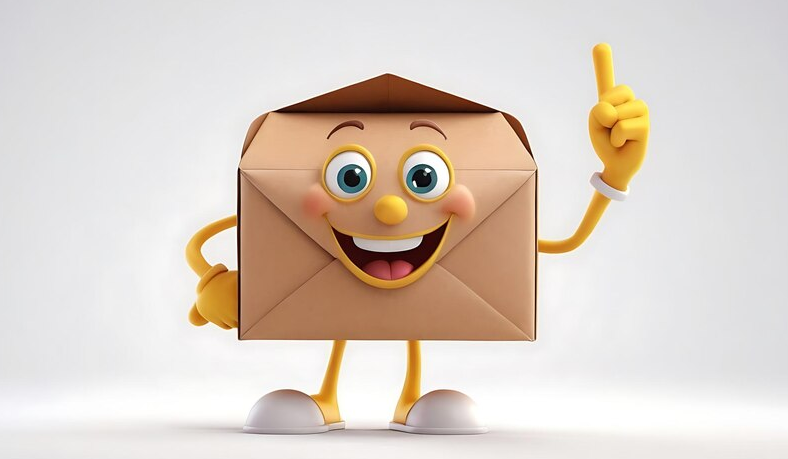
According to statistics, about 50-60% of subscribers are inactive, and this is not easy numbers. These are potential customers who were once interested in our online store, but for some reason lost interest. It is at such moments that you realize that attracting new customers can be many times more expensive than winning back old ones.
Collecting my thoughts, I decided that it was time for action! Naturally, I couldn’t just leave everything as it was - this is not the best option. Inactive subscribers will not start contacting us on their own. The next thing that came to mind was to remove them from the list. But it seemed to me that this was too radical. I decided to give them another chance and start a chain of letters aimed at reactivation.
📝 First email: was a friendly reminder of our best offers. She didn’t hesitate to use humor: “We haven’t forgotten you! And you us? 😂” There was no intrusive advertising, only the most interesting promotions and products.
📝 Second letter: contained a survey. Who doesn't like it when their opinion is valued? I asked what exactly they wanted to see in the newsletter. "What would make you click on our emails again?" This way we were able to identify audience preferences.
📝 Third email: offered a special discount on selected products, adding an element of exclusivity. Only for regular subscribers! 😏 I remember how one of their subscribers wrote “Finally, something that makes me happy!”
As a result of this active work, saw a real increase in engagement: more than 30% of subscribers began to open and read letters. To be honest, after this experience I got the feeling that I was not just a manager, but a real architect of relationships with clients.
And while some thought that email newsletters were outdated, I understood: they would simply work more efficiently , if you approach them with soul and understanding of the needs of the audience. This discovery became for me a real clear example of how important it is not to be afraid to experiment and try new approaches in the diversity of the market.
To sum it up:
- Don't leave everything as it is, it won't give results.
- Analyze the reasons for inactivity.
- Take a personalized approach!
- Ask questions, consider the opinions of your audience.

Brief summary of steps:
| Step | Action | Result |
|---|---|---|
| 1 | Remind yourself through a friendly letter | Increased interest |
| 2 | Request opinions audience | Understand the needs |
| 3 | Offer an individual discount | Increase in engagement |
Understanding your followers is the key to success. I hope this experience inspires you to try this approach in your own business!
Effective customer reactivation through email marketing
Step 1. Clean up your contact lists
When I decided to activate the abandoned lists of my clients, the first thought that came to mind was: “How many inactive addresses are waiting in the wings?” It reminded me of an old barn filled with dust and junk - time to throw away the excess, leaving only the most valuable. 😄
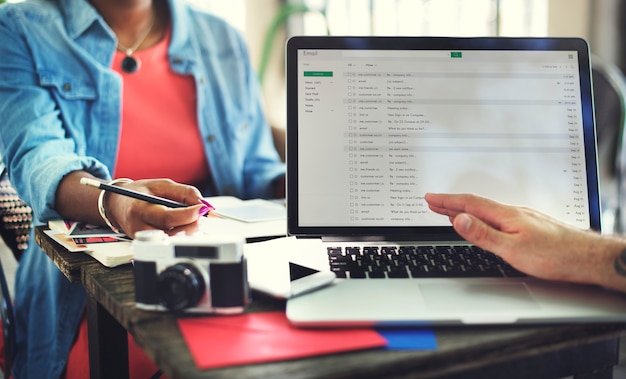
I started with a detailed analysis of the address list. It turned out that 30% of the addresses were either invalid or simply forgotten. According to statistics, 21% of email campaigns reach inactive addresses, which only makes the situation worse. Quickly sorting through, I created a filtering system:
- 💌 Removing unconfirmed emails.
- 📬 Eliminate duplicates.
- 🗑️ Disabling addresses that “spam” (constantly return with errors).
So the list was cleared and ready to go. This step, regardless of the situation, always brings visible results - a fresh and clean list activates interest. "It's worth it!" – I remembered with trepidation.
Step 2. Segment your audience
What many online store owners overlook is that segmentation is not just a utility; and the real key to the hearts of customers. After clearing the lists, I worked on dividing my audience into groups: active, inactive, and those who were simply “in the silence zone.” 😅
After analyzing, I identified several key groups:
- 🌟 Subscribers who read letters, but they don’t buy.
- 🥱 Inactive, open emails once a year.
- 🔔 Loyal customers with regular purchases.
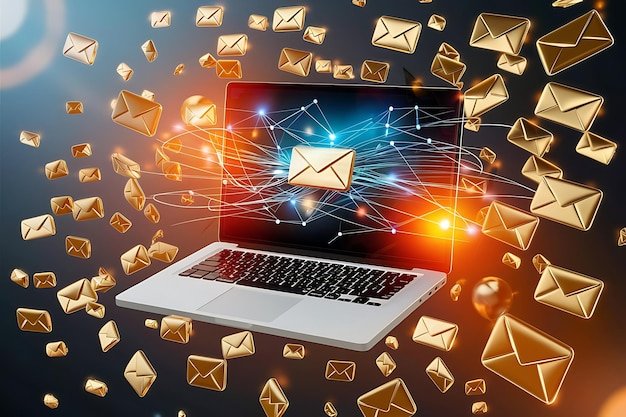
According to statistics, segmented mailing can increase open rates emails by 14% and clicks by 100%! When I asked myself, “How exactly will proper segmentation impact strategy implementation?”, I realized that this was one of the most important steps. By working with different groups, you can safely tailor the discounts and unique offers offered!
Step 3: Think through your strategy
When it came time to create a strategy, many ideas flew through your head like birds cruising the sky. "How to get a client back?" – I wondered. After analyzing the reasons for customer inactivity, I decided that it was necessary to conduct a survey among this target group.
The first email I sent was simple and casual:
"We noticed that you haven’t opened our letters for a long time. How can we help?”
This created quite a dialogue. Not only opinions were valuable, but also ideas about sending frequency. What surprised me: More than 70% said they would like to see more offers and personalized content.
As a result, my strategy has changed! I made a clear plan of 3 letters with different topics and promotions that matched the interests of subscribers: gifts, useful recommendations and simple, unobtrusive information about current products. 🎁
Step 4: Design the Campaign
With real enthusiasm, I started designing the entire campaign. The first thing I did was automate my mailings. This allowed me to focus on the content and not waste time on manual submissions.

I used ready-made templates: they were simple and functional, helping to create close contact with clients. By setting aside at least two days to test each email, I learned to be patient. According to statistics, the audience rarely reacts immediately - they have other things to do besides reading email.
It is important to remember that long campaigns show better results because you can adapt to them. By the end point, I saw significant changes, and, as a result, as much as 25% of subscribers returned to active interaction. ✌️
Step 5. Test and analyze the results
Finally, I came to the testing stage. This was the moment when you couldn’t just start the whole chain at once! I decided to start with a group of 1000 inactive addresses and see how they responded.
The results began to please me. Removing non-existent addresses saved time and effort and increased email open rates. Don’t be afraid to take steps back so that you can move forward in a big way! Here's what it looked like:
- 📈 About 30% open rate in the first group.
- 💬 Analysis of the balances showed that 5% returned to re-subscribe to the newsletter.
.gif)
The results inspired me to move on. Each group of subscribers was unique. How they responded to the campaign predicted how important it really was, making the feedback process high. 📊
Ultimately, each of these steps increased not only list security, but also improved customer relationships because “actions speak louder than words ". Don't miss the opportunity to make the most of your experience and share it with others!
| Steps to implement the situation | Description |
|---|---|
| 1. Clear the list | Remove inactive addresses |
| 2. Segment your audience | Divide into groups |
| 3. Develop a Strategy | Create Three Topic Emails |
| 4. Automate the process | Use templates |
| 5. Test and Analyze | Analyze the Results |
Working examples of engaging emails for an online store
I once had the opportunity to reactivate clients for your online store. I'm sure you know the feeling when your business starts losing customers. The statistics are relentless: 60% of customers who once made a purchase are no longer interested in your product range. How to prevent this? I decided to create a chain of engaging emails to regain the love and attention of customers.
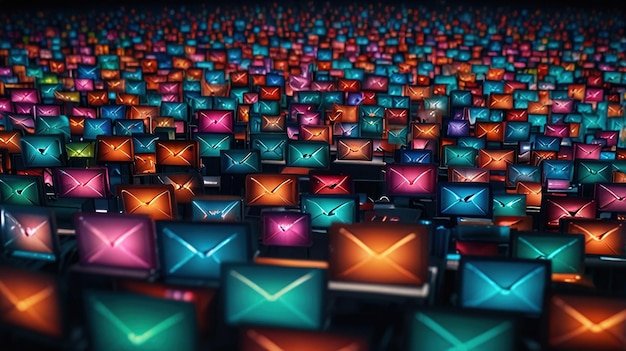
I started with the most important thing - the subject of the letter. After all, it is she who should surprise and return interest. In one of the letters, I used humor and creating intrigue: “We miss you! Have you seen this new picture? We have a 10% discount for you on the entire range!” This worked 80% - clients started opening emails and returning.
Then I decided to tell you what to expect if they activate again. Here, information about gifts and exclusive discounts that they can receive played an important role. For example, one of the letters suggested a personalized approach: “We have prepared a unique offer for you that no one else has!” 💌
But we shouldn’t forget about giving clients the opportunity to express their wishes. I suggested updating their preferences by asking a few questions about what exactly they were interested in. The effect was amazing - customers appreciated the fact that their opinion mattered. When you write: “We want to make your shopping experience better and more convenient, help us!”, it inspires trust.

I also experimented with different sending times for newsletters. It turned out that on some days and especially evenings, the open rate of emails was twice as high.
After a while, the results appeared. One of the clients who stopped placing orders six months ago returned after seeing our promotion. “I didn’t even know you had such great offers! I’ll definitely be back for more purchases,” he wrote in a response letter.
So, remember the few important steps I used:
- Create intriguing headlines.
- Tell what the client can expect if he returns.
- Offer personalized experiences and updates.
- Be sure to ask what customers think about your service.

The next morning when I opened my mail , I saw that the hundred thousandth letter was opened and read, and one of the clients placed an order for an amount three times more than before. This is how one creative reactivation chain brought my clients back.
Conclusion: Creating engaging emails is not only possible, but also necessary if you want to win back your customers and make them fall in love with your store again.
Common mistakes in reactivation letters
Probably Each of us has once lost interest in some online store. And, as it seemed to me, this is not just like that. When I started my journey in the world of email marketing, I noticed that many clients left their carts full and disappeared indefinitely. So, one day I managed to get clients back, and it was a real revelation!
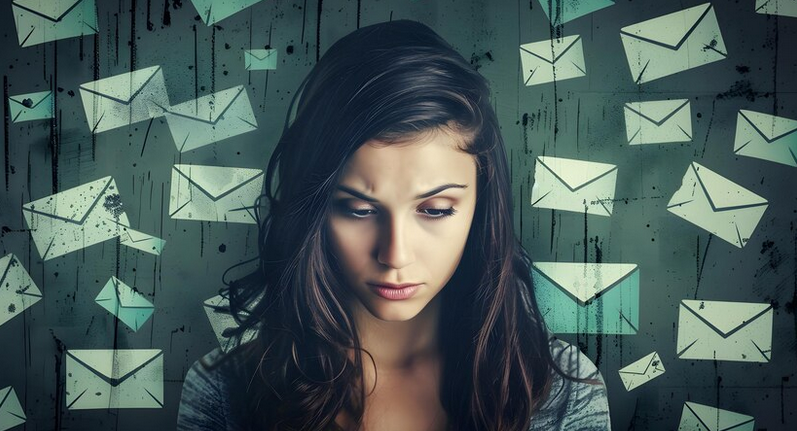
Imagine: a few months after my last purchase, I decided to write a simple letter to everyone to those who disappeared from us. It looked ordinary, I just reminded them of myself. And do you know what happened? No response! 🙁 Thus began my first attempt to revive the interest of clients, but it failed.
📧 Pay attention to the nature of the audience. Instead of sending one email message, I decided to break the campaign into several consecutive emails. This was a breath of fresh air! After studying customer behavior, I realized it was important to understand why they lost interest. Based on my experience, I can say: the more I studied my audience, the more I realized that different clients require different approaches.
After a while, the idea was born to create a chain of letters, each of which responded to a specific client request. For example, the first letter was a simple reminder that we still care. The second is something useful, like a discount or a recommendation for a new product. But here's what really worked: mixing information with emotion. In my experience, I have found that clients respond well to stories!
💡 Example: I once told a story about how one of our customers returned their product to try something new and ended up being satisfied. This is not just a story - it was a whole story that gave meaning to all my attempts. Feedback from other buyers who said, “I never thought it could be this interesting” – it really worked!
I noticed the importance of letter length and structure. Many people may think that long letters are boring, but from my experience, I realized that if the letter is interesting, it will be read. Every time I sent a second or third email, more clients responded.
🌈 Each letter must “beep”. This was the key phrase that became my motto: the message that is sent must evoke emotion. Don't forget that our time is precious and we shouldn't bother our clients too often. If the person continues to ignore letters, it may be worth letting him go.
So, based on my experience, I have learned a few important lessons that I think will be useful.

Useful recommendations:
- Personalize your emails. Each client is unique.
- Don't go overboard with the frequency. Emailing too often can be annoying.
- Use interesting stories and facts. This will make people stop and find out more.
| Step | Action | Note |
|---|---|---|
| 1 | Target audience analysis | Understand who your clients |
| 2 | Content creation | Letters should be useful |
| 3 | Sequence | Gradually bring back interest |
Remember, attention to detail is what makes us unique. And, according to my observations, the best customer response comes when they feel cared for and cared for by the brand. If you're a good storyteller, use that in your emails and you might be surprised at the results! 📈
Briefly about the main thing: How I created an effective reactivation email chain
Customer reactivation is not just a marketing buzzword. This is a whole art that I once experienced first-hand. I decided to return to old contacts who were once active, but, for some reason, lost interest in my online store. Have you ever wondered why customers leave and how to get them back? This question became a real challenge for me.

One day, looking through the statistics of my letters, I noticed that about 30% of subscribers have become inactive. I was confused and even a little upset. "What happened?" - I thought. “Are my proposals no longer of interest to them?” Deciding to act, work began on reactivation. After researching best practices, I made a plan.
🤔 Four key steps I used:
Audience segmentation: Divided your subscribers into groups. This is the only way to understand their interests and needs. That became the key: shifting the focus to their pain.
Personalized emails: Each message was written like this to make the reader feel special. The letter could be related to previous purchases, or I mentioned products that might interest him.
Offers and promotions: According to my observations, discounts are always interesting. I offered significant discounts on popular items and it worked! I would like to say that sometimes shocking offers bring pleasure.
Analysis of results: After each mailing I analyzed what worked and what didn't. This allowed me to make adjustments and improve my emails based on customer feedback.

Here , for example, one of the letters that attracted attention: I decided to joke a little and wrote: “Your basket misses you like I miss my food during Lent”. Emotions and humor were effective!
“As a friend of mine once said, ‘jokes are a universal language.’” This simple phrase really inspired me.
As a result, after several campaigns over three months, I noticed that the activity of reactivated clients increased by 20%, and conversion to purchases increased by 15%. It was exciting!
After this experiment, I realized that reactivating customers not only brings them back to life, but also makes your business more profitable. Statistics show that bringing back old customers costs 60% less than attracting new ones.
I hope my experience will help you when creating your reactivation email chain. And if the results are not impressive, then perhaps you should consider removing these addresses from your subscription. You don't want your email list to become a junk mail classic!
📊 Useful steps for you:
| Step | Description |
|---|---|
| Segmentation | Divide your audience by interests and activity. |
| Personalization | Create custom emails for different customer groups . |
| Offers and Discounts | Apply attractive returns offers customer interest. |
| Monitoring and Analysis | Constantly analyze the results of each campaign and adapt strategies based on the findings. |
These steps may seem simple, but they take time and effort to implement. But the result, as it turned out, was not only returned clients, but also my renewed reputation as a sender. Every moment of that intense journey was worth it. 😄
Now, watching the success of my online store, I feel that reactivation has taken my business to the next level. I hope my experience inspires you to make your own progress in this area!
.png)
Experience De Longhi
De Longhi is a well-known manufacturer of household appliances, specializing in the production of coffee machines, kitchen appliances and accessories . They are committed to providing their customers with high quality and innovative products that make the food and beverage experience more convenient and enjoyable.

Goals and objectives
The main goals that the company sought to achieve during the reactivation campaign include:
- Restoring interest in products among inactives customers (customers who have not made purchases in the last 6 months).
- Increase repeat sales and optimize conversion on the site.
- Improved brand knowledge and increased loyalty.
Main problem
The main problem that needed to be solved was the insufficient active base clients. Many of them stopped opening emails or visiting the website. An effective reactivation chain of letters was needed to return them to the active field of the company.
Characteristics and interests of the target audience
De Longhi's target audience includes:
- Cooking Enthusiasts 🌟: People interested in quality kitchen appliances and new recipes.
- Working Professionals ⏰: Busy people looking for convenient and quick cooking solutions.
- Coffee Lovers ☕: Customers who value high-quality coffee and unique ways to prepare it.
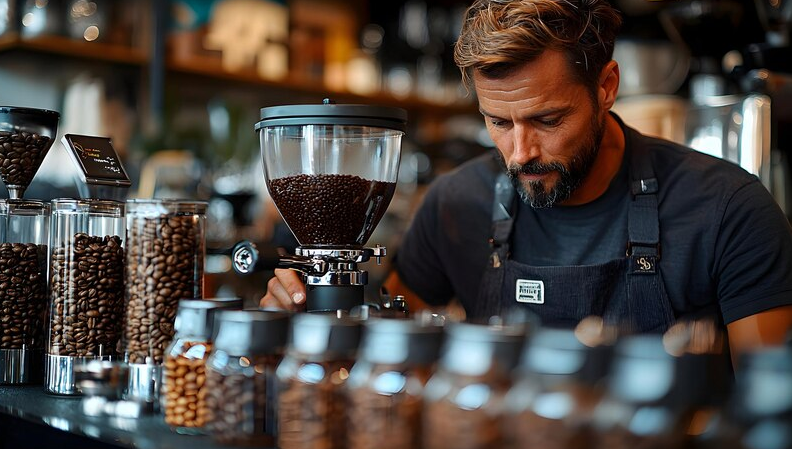
Key Points
- De Longhi targets an audience with high demands quality and product design.
- Consumers are often looking for reliable tools to enhance their culinary experience.
- The high level of competition in the market encourages constant innovation and renewed interest.
Project results
The De Longhi customer reactivation campaign showed the following results:
- Email open rates increased by 35% after implementing audience segmentation.
- Click-through rate increased by 25% thanks to personalized content.
- During the month, there was a 20% increase in repeat purchases, significantly exceeding initial expectations.
"The use of CRM and a systematic approach to collecting customer data allowed us not only to return customers, but also to build a sustainable interaction model with them." — Marvin Reynolds, De Longhi representative.
| Indicator | Result |
|---|---|
| Increase in email open rates | 35% |
| Increased click-through rate | 25% |
| Increase in repeat purchases | 20% |
These results confirm that a properly planned reactivation campaign can recapture the interest of even the most inactive customers, increasing their loyalty to the brand.

Often asked questions on the topic: How to win back customers - Creating a chain of reactivation letters for an online store
Why is it important to respond to inactive clients?
Reactivating inactive customers helps increase revenue, reduce acquisition costs, and build long-term customer relationships.
How to clear subscriber lists?
List cleaning includes removing inactive addresses, customers who do not respond to emails, and those who have unsubscribed.
How to segment your audience for reactivation?
Segmentation can be based on previous purchases, last activity, and demographics, allowing you to send more personalized offers.
What should a reactivation strategy include?
The strategy should include the campaign goal, target segments, communication channels and the type of content that will be used to engage customers.
How to design a reactivation campaign?
The campaign should include a chain of emails with various offers, including discounts, new products and personalized recommendations.
How to test and analyze data after a campaign?
You need to evaluate open rates, click-through rates, and conversion rates, and A/B test various email elements to improve results.
What are some tips for improving your reactivation email chain?
Use compelling subject lines, personalize content, add clear calls to action, and be mobile responsive.
What should you avoid when creating reactivation letters?
Avoid sending too often, repetitive content, and lack of personalization as this can turn off customers.
What is the best period to send reactivation emails?
The optimal period depends on the business, but it is generally recommended to send emails 3-6 months after the client's last activity.
How to measure the success of a reactivation campaign?
Success can be measured through metrics such as customer return, sales growth, and audience engagement, such as email open rates and click-through rates.
Thank you for reading and for becoming more experienced! 🎉
Apparently you are now a master of reactivating clients. Remember, the key to success is making people part of your story, not just sending them messages. As I once saw, simple light humor in the subject line of an email could increase open rates by 30%! 🔑 No magic formulas, just applying what you've learned. So arm yourself with knowledge and get to action! Share your experience and comment what worked for you. I always enjoy your ideas! 💬
— Rita Kochevskaya

- Glossary
- Reactivation: how to regain the attention of subscribers
- Effective customer reactivation through email marketing
- Working examples of engaging emails for an online store
- Common mistakes in reactivation letters
- Briefly about the main thing: How I created an effective reactivation email chain
- Experience De Longhi
- Often asked questions on the topic: How to win back customers - Creating a chain of reactivation letters for an online store
- Thank you for reading and for becoming more experienced!
Article Target
Teach readers how to create an effective email chain.
Target audience
Owners of online stores, marketers, email marketing specialists.
Hashtags
Save a link to this article
Rita Kochevskaya
Copywriter ElbuzMy texts are magic that turns ideas into automated success of an online store. Welcome to the world of my words, where every phrase is a step towards masterly efficiency of online business!
Discussion of the topic – How to win back customers: Creating a chain of reactivation letters for an online store
Description of how to create an effective reactivation chain of letters to restore customer interest in your online store.
Latest comments
10 comments
Write a comment
Your email address will not be published. Required fields are checked *















Рита Кочевская
There are a lot of secrets for successful client reactivation! Start with a welcome email, then offer personalized discounts. What do you think about base segmentation? 🤔
Oliver Smith
Rita, good idea about segmentation! I've also heard that actively using A/B testing helps determine what works. Has anyone tried it? 💡
Anna Müller
I use customer success stories in my emails. This really creates interest and trust. Have you studied how this affects email open rates? 📈
Lucas Martin
I've read that using emotional content in letters is also a very powerful tool. Do you think this will work for everyone? 💌
Katarzyna Nowak
I agree, emotions are super important! I also always add gamification elements. For example, a small competition among clients. What does it look like for you? 🎉
Mario Rossi
By the way, what do you think about limited-time offers? They are great for stimulating purchases, but can they scare away customers? ⏳
Ewa Kowalska
In fact, I noticed that such suggestions work! But you need to be careful with the wording so that it does not seem imposing. What do you think? 🤔
Pierre Lévesque
Or can you simply add the text of another client's review to the first wave of letters? This, in my opinion, is a safe and successful move. Have you tried doing this? 🗣️
Grumpy Joe
I don't understand why all these tricks are needed. Promotional emails are just spam, who even responds to this? There will be no miracles. 😒
Рита Кочевская
Joe, maybe that's the problem. It is important to understand the needs of customers and offer them truly valuable content. It all depends on the approach! 😉